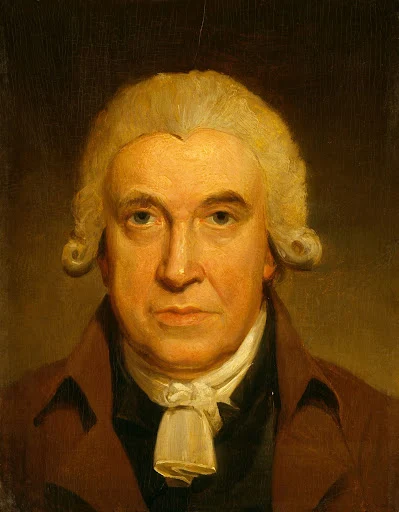A steam engine is an engine which performs mechanical work using steam as its driving force. Though very scarcely put to use today, steam engines were a revolutionary invention and it is considered as one of the greatest achievements of the modern world.
♦ James Watt:
♠ James Watt is credited as the inventor of Steam Engine, Thomas Savery and Thomas Newcomen were two inventors who designed the crude and very basic steam engine.
♠ Thomas Savery, an English military engineer, was the first to patent the basic crude steam engine in 1698, based on the designs of Denis Papin's pressure cooker.
Thomas Newcomen's Steam Engine
Thomas Newcomen later improved upon Savery's design. But it was Scotsman James Watt's improved design which helped in ushering a new era of Industrial Revolution.
Right side - Thomas Newcomen ; Left side - Thomas Savery
• James Watt coined the term, “ horsepower ” as a way to help explain how much work his steam engines could do for a potential buyer. One horsepower is equal to 746 Watts.
• In 1765, James Watt, a professor in the University of Glasgow, was asked to work on improving the workability of Newcomen's designed steam engine. He attached a separate condenser connected to a cylinder by a value. This design became very popular as it was workable and thus, James Watt is regarded as the inventor of a commercially useful steam engine.
Scotsman James Watt ( 1736 - 1819 )
♦ Working of a Steam Engine:
• A steam engine is equipped with a heating furnace and a water boiler. Coal is used to burn the furnace and give huge amount of heat. This heat turns the water in the boiler into steam. This steam after reaching high pressure is passed through pistons and turbines. When these pistons and turbines expand, they move, and along with it moves the shaft, which at one end is attached to the wheels. This way, the heat energy is converted into mechanical energy.
• Basically, a steam engine is able to harness the energy of steam to move machinery. It is a fairly clean source of energy. Steam engines were used to a great effect to run locomotives and steamships.
“ Science Owes More To The Steam Engine Than The Steam Engine Owes To Science. ”
— Lawrence Henderson.






No comments:
Post a Comment
Thank You for your Comments